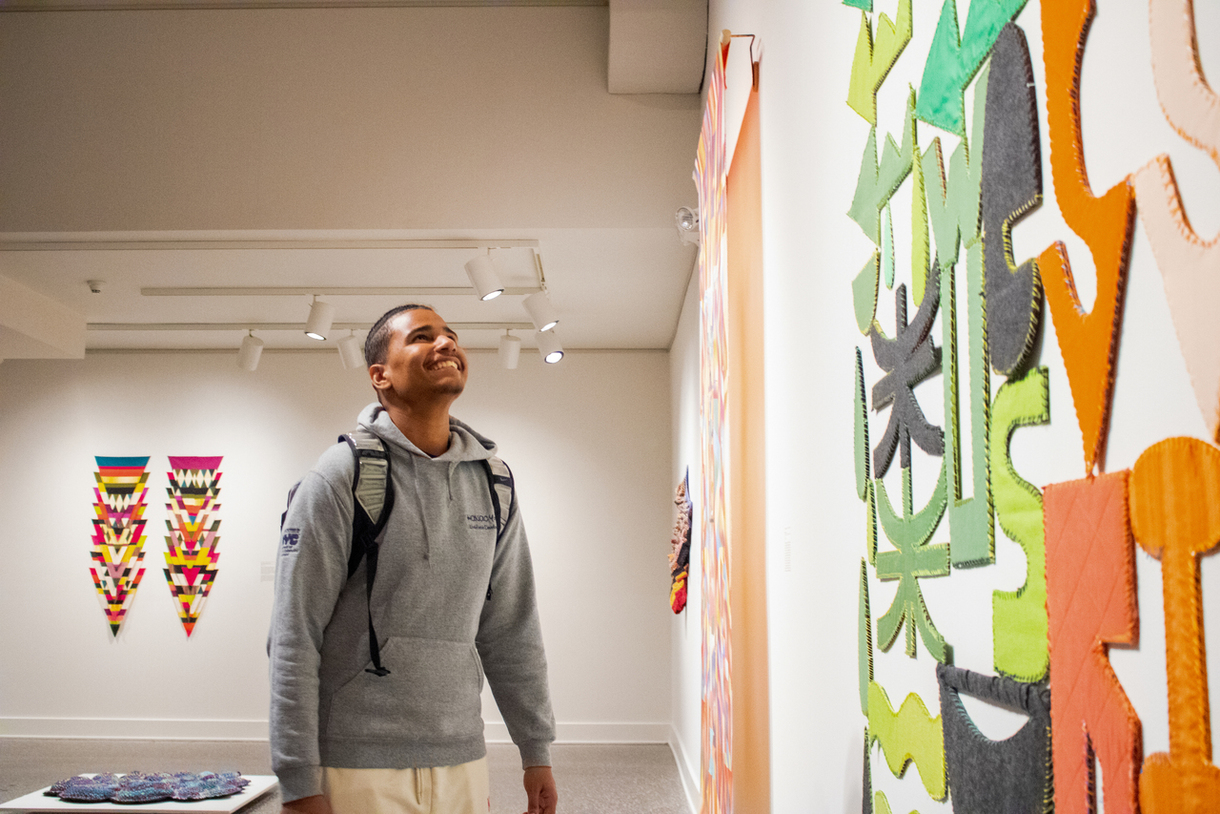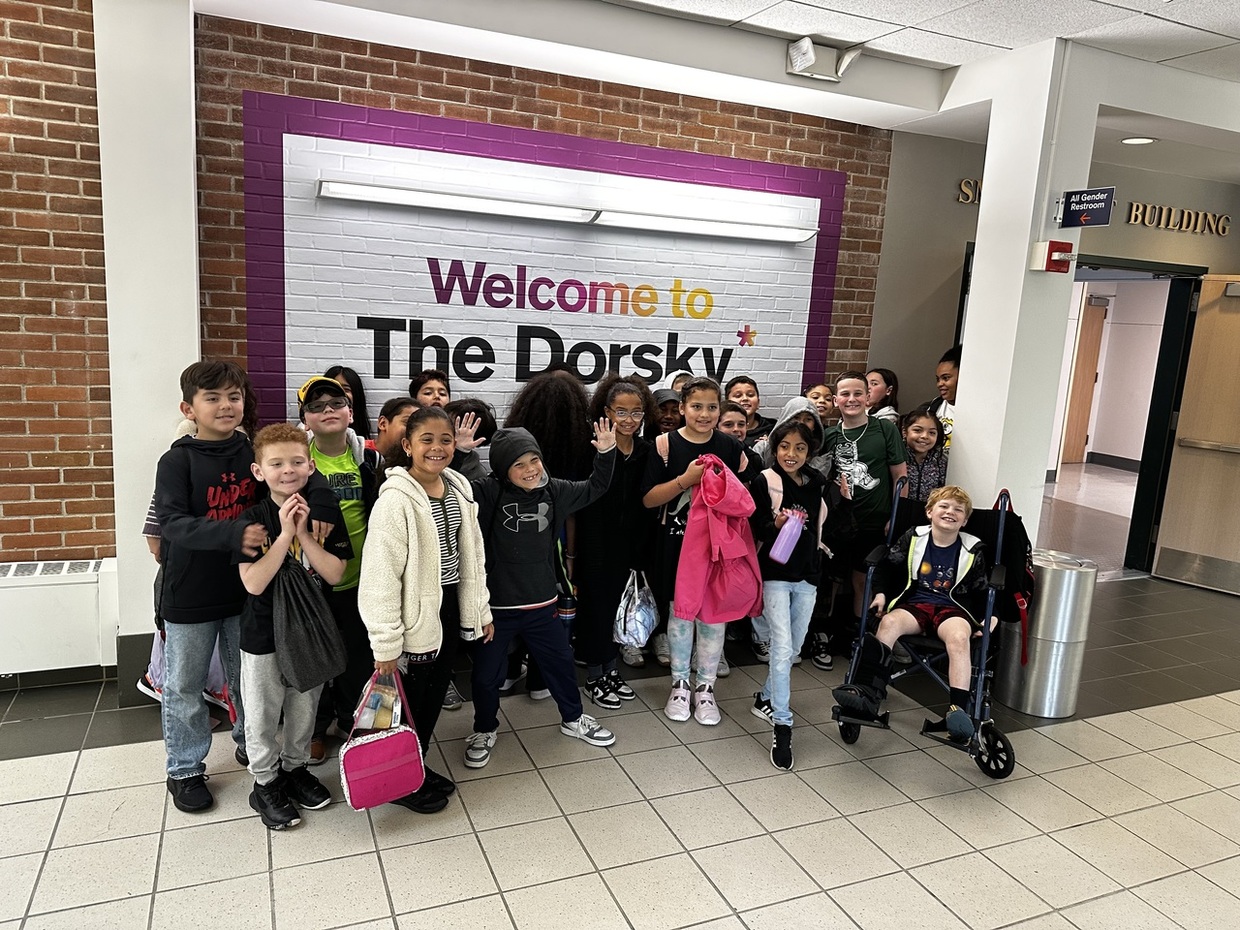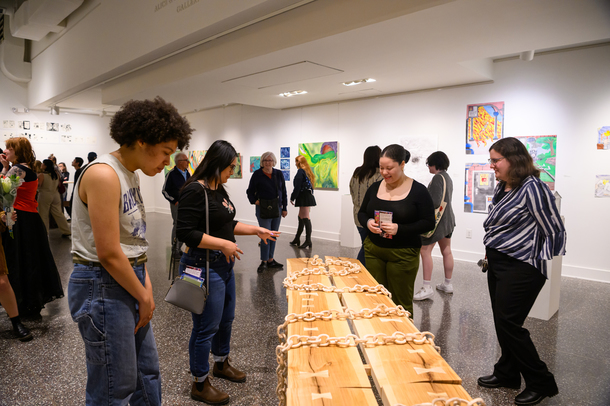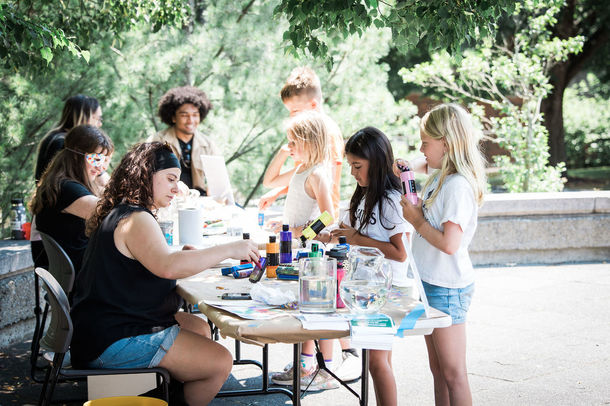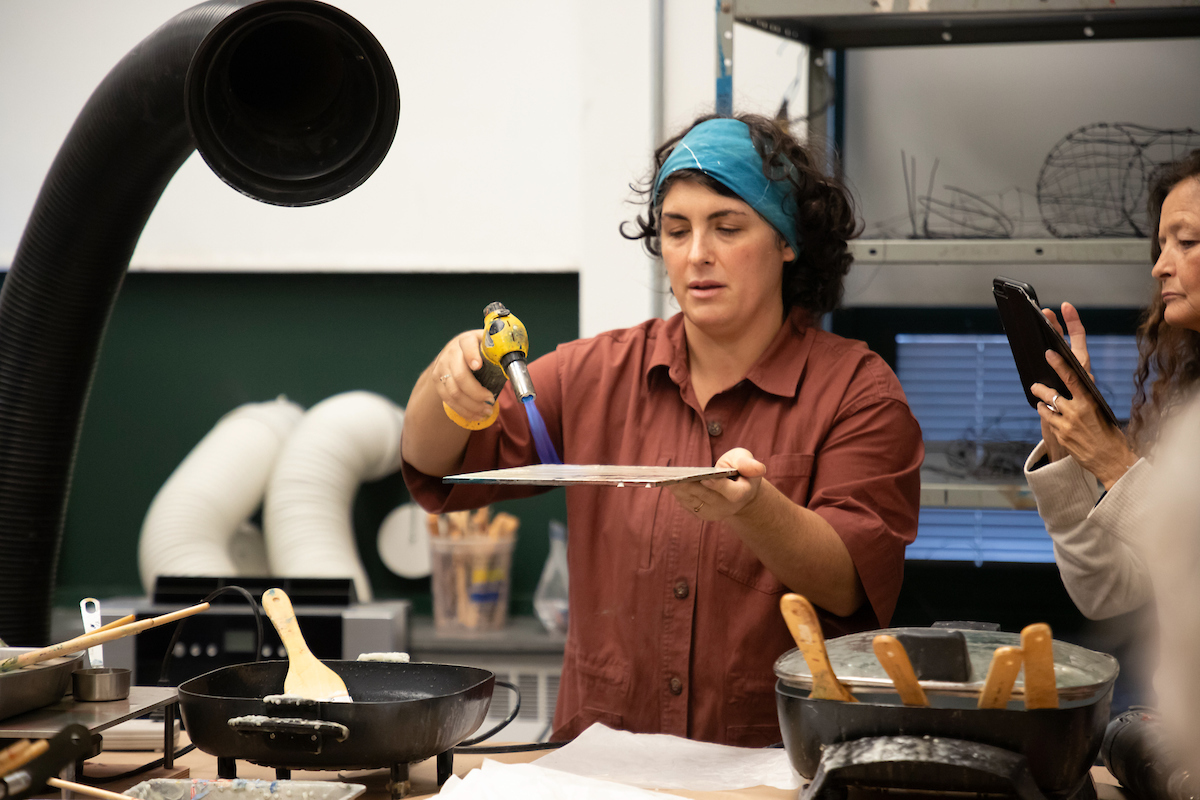Gone are the days when museums were silent temples of art, visited primarily by hushed crowds of cultural connoisseurs.
Today's museums are vibrant community hubs, reimagining their role by offering hands-on maker spaces and creating innovative experiences that speak to younger, more diverse audiences to become vital civic spaces where art, education, and community connection intersect.
Here at SUNY New Paltz, that change is happening too – both at the Samuel Dorsky Museum of Art and with students rethinking art and community.
As an aspiring educator, Joseph Cartolano ’25 (Visual Arts Education) set out to build a framework for making art museums more accessible to the public through education-based offerings.


“Patrons need to see museums as a place where they can learn both about the art itself and what goes into making it come to life,” he said. “Museums need to provide a space where people can interact with the art they’re seeing, and maybe that means having to make it yourself.”
With his background in sculpture, printmaking and wood design, Cartolano set out to re-sculpt rings once housed in New York City’s Metropolitan Museum of Art, inviting viewers of his fall 2024 Honors Program thesis presentation to both appreciate and understand the intricacies of different museum displays.
“I want for people to not only admire art, but to experience it for themselves,” he said. “To be able to hold and interact with something replicating what you’re seeing is a joy in itself.”
Art museums across the country are already engaging in the kind of work Cartolano is looking to mold. According to the American Alliance of Museums, museums provide a total of more than 18 million instructional hours each year for educational programs including guided tours for students and school outreach.
One of those museums engaged in this kind of work is New Paltz’s own Samuel Dorsky Museum of Art, more commonly known as The Dorsky.
The Dorsky’s work in changing perceptions of art museums
The Dorsky has been actively building itself as a free, public museum where visitors can experience more than just artwork from both local and globally recognized artists, they can come home with a new sense of knowledge on why art matters to people as individuals and as a way to connect with our community.
In 2023, they were honored an award in the Engaging Communities category from the Museum Association of New York Award of Distinction for an exhibition that was paired with a program series engaging multiple community organizations and attracting the largest amount of K-12 school groups, SUNY New Paltz classes, and community group tours in The Dorsky’s history.
“Art museums have to reach out to the community to do that work, to show up where people are, instead of expecting them to come to you,” said Dorsky Museum Education Manager Zachary Bowman. “We want to show visitors that this museum belongs to them, and we make a point of doing so each day.”
Throughout its more than 20-year history, the museum has opened its doors to the public with different activities where all can engage in the arts. In 2024, The Dorsky welcomed a record number of K-12 school visits, and its most recent director’s dispatch reports that the museum logged more than 13,000 visitors, including students and community groups.
“We want visitors to see the world reflected around them in an art museum,” said Bowman. “We want to show art that reflects where we are today, and that visitors like our students can connect with.”
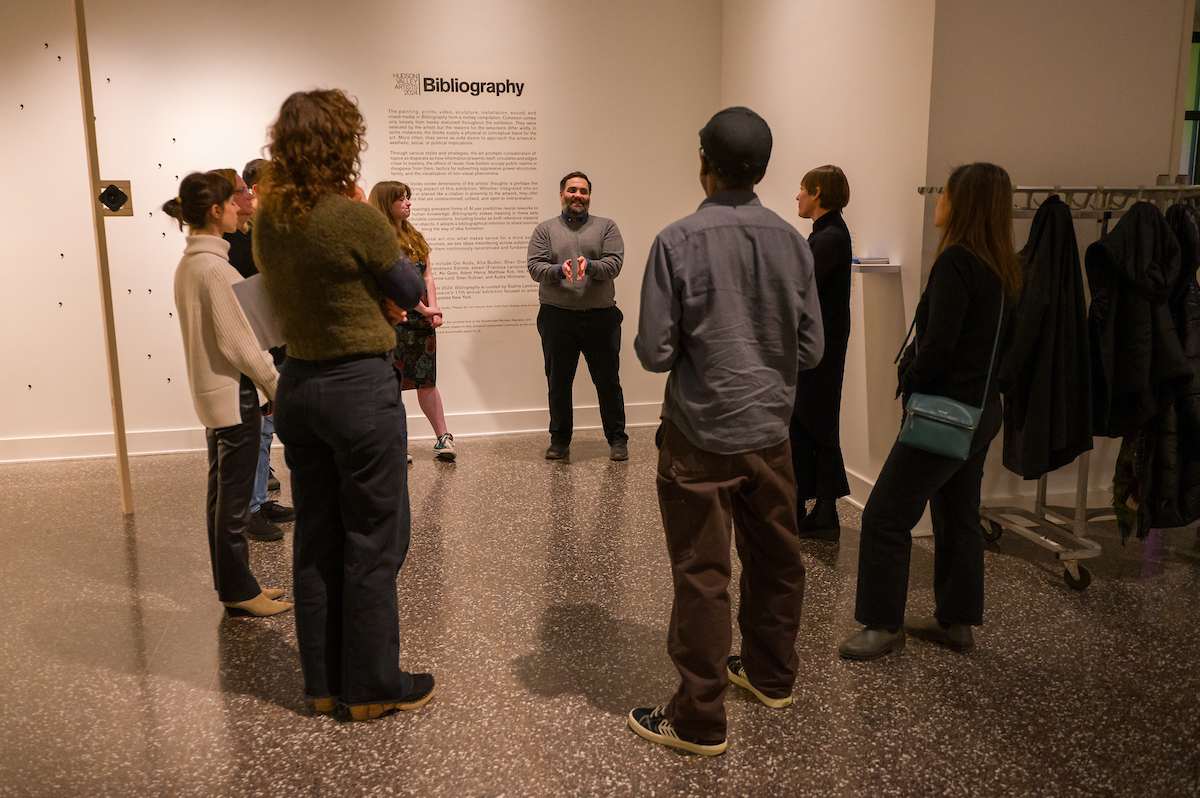
How art museums can inspire careers, change lives
One of the students who connected immediately with The Dorsky was Emily Harr ’18 (Art History; Public Relations).
“It was cool to walk into a space right on campus where you could see Warhol or Goya,” she said. “I could connect with works of art I was already learning about in classrooms without having to travel to New York City.”
Harr ended up working at The Dorsky as a student. Today, she shows up to the iconic Metropolitan Museum of Art in New York City for work. She is a program associate, working to improve the museum experience for individuals with disabilities.
“I think museums should be a place where, no matter what, you can chat with your friends and see a cool piece of art or a performance,” she said.
Erin Dougherty ’22 (Sculpture), meanwhile, visited the museum first as a high school student, and now works for the Master of Fine Arts program at Bard College.
“It felt like walking into a new world,” said Dougherty. “I was instantly mesmerized, and it informed what I wanted to do as a career.”
Going to an art museum can not only potentially inspire a person’s professional outlook but transform their personal identity. Bowman, for his part, discovered the impact of art museums while visiting the Dallas Museum of Art as a young, closeted person in a Texas small town, where he found his place in this world.
“The people were so kind to me, and the space was so beautiful,” he said. “I decided to go into art because I found a community that encouraged me to be myself.”
How art museums can move forward from exclusionary past
As art museums continue to expand efforts to create more inclusive programming, Bowman argues that the key to achieving this is acknowledging their history.
Art museums were founded as cabinets of curiosity in the 1800s, where rich, eligible bachelors could show off their collection from their travels around the world. To this day, galleries and exhibitions at prominent art museums are often curated or funded by wealthy, connected families.
“There's a lot of talk and work around what people refer to as decolonizing the museum,” said Bowman. “Most of the onus is on museums themselves to reach out to underrepresented communities for their input, to see how we can best showcase what they want to see there.”
The Dorsky is already reckoning with this past by centering their programming around engaging underrepresented groups in the art world. The museum is hosting high school student groups, programming family-oriented activities and showcasing pieces from or surrounding artists of color in their regularly scheduled exhibitions, including their more recent “Global Connections” exhibition and their tribute to beloved New Paltz professor Benjamin Wigfall.
As an aspiring educator, Cartolano can appreciate the efforts of museums like The Dorsky in moving past their complex history and forward into a world where all patrons can both learn about and engage with art.
“I think it’s the responsibility of museums to expand their patronage, and knowing I was able to contribute ideas on how to do this at the same time as The Dorsky is embarking on similar endeavors made this project all the more meaningful,” he said.
For more information on The Dorsky, including giving today, visit here.

